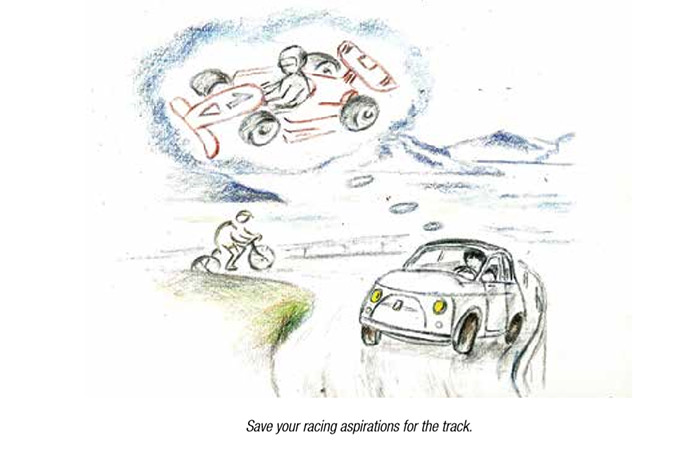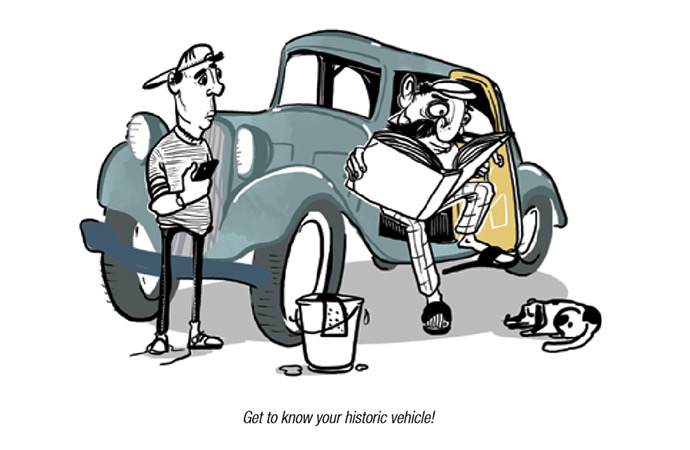Many of the suggestions may seem obvious, but even if they are, it doesn’t hurt to be reminded about the responsible use of a vintage vehicle when venturing out on public roads. Thus the latest FIVA Guide: For responsible use of historic vehicles on today’s roads, just published by the Federation Internationale Vehicules Anciens.
“To ensure the continuing approval of society and the general public, safe driving and environmentally friendly behavior are vitally important,” FIVA says in the guide’s introduction.

“Historic vehicle owners have a good track record when it comes to careful driving — as shown by the relatively low accident insurance premiums,” the text continues. “What’s more, since historic vehicles aren’t used very often and, when they are, it tends to be on country roads rather than in urban centers, their contribution to overall road vehicle emissions pollution is negligible.”
However, “the world of mobility is rapidly changing. Think of the plans to ban the sale of new cars with petrol and diesel combustion engines. Think of the development of fully automated, driverless cars. Think of the many low-emission zones that have spread across Europe…”
FIVA’s mission is to make sure historic vehicles can be incorporated into any future road-use legislation. One part of that effort is to encourage responsible use of vintage vehicles, and thus the new 44-page, PDF-format guidebook, which has two sections: “Road Safety and Considerate Use” and “Caring for the Environment.”

Here are some of the suggestions:
• “Speeding, excessive or over-enthusiastic acceleration, cornering and braking are all possible causes of irritation or even dismay, very much to the detriment of the historic vehicle movement in general. Historic vehicles running on the road must comply at all times with the legal requirements for the road on which they are traveling, both in daylight and after dark.”
• “You should be aware that the drivers of modern vehicles might be unaware of the practical limitations of historic vehicles, particularly with regard to stopping distances. You should therefore at all times drive protectively and proactively, realizing that it is your primary responsibility to reduce the consequences of those limitations as far as possible.”

• “Where the vehicle does not have modern flashing direction indicators, you or your passenger should show your intentions by using hand signals. However, be aware that drivers of modern vehicles might be unfamiliar with the meaning of those signals, so you should at all times be cautious…”
• “In general, lighting on historic vehicles produces significantly less illumination than modern lighting. Most modern vehicles now habitually use running lights on a continuous basis, making historic vehicles relatively less likely to be noticed.”
FIVA suggests historic vehicles be equipped with modern lighting, if possible, and that tail and brake lights be clearly visible from at least the length of a football field. It also suggests the installation of seat belts and child safety seats.
• A section of the guide deals with organized historic car driving events and suggests participants “save your racing aspirations for the track.” Another part of the guide focuses on ESVs — exceptionally slow vehicles — such as when driving a vintage tractor or commercial vehicle on public roads.
• Regarding environmental concerns, FIVA regular inspection of fuel systems for leaks, of ignition systems to reduce emissions. When displaying a vehicle in a public place, using an oil mat to protect the surface beneath, and the proper storage of fluids and spare parts to protect both those objects and the environment.

If there’s a bottom line, it’s this:
“Whenever your drive, you should realize that your vehicle is an eye-catcher, and your behavior could have an impact on the general public’s opinion of historic vehicles, for better or worse!”
The complete guidebook can be downloaded in PDF format, and in English or French, from the FIVA website.






